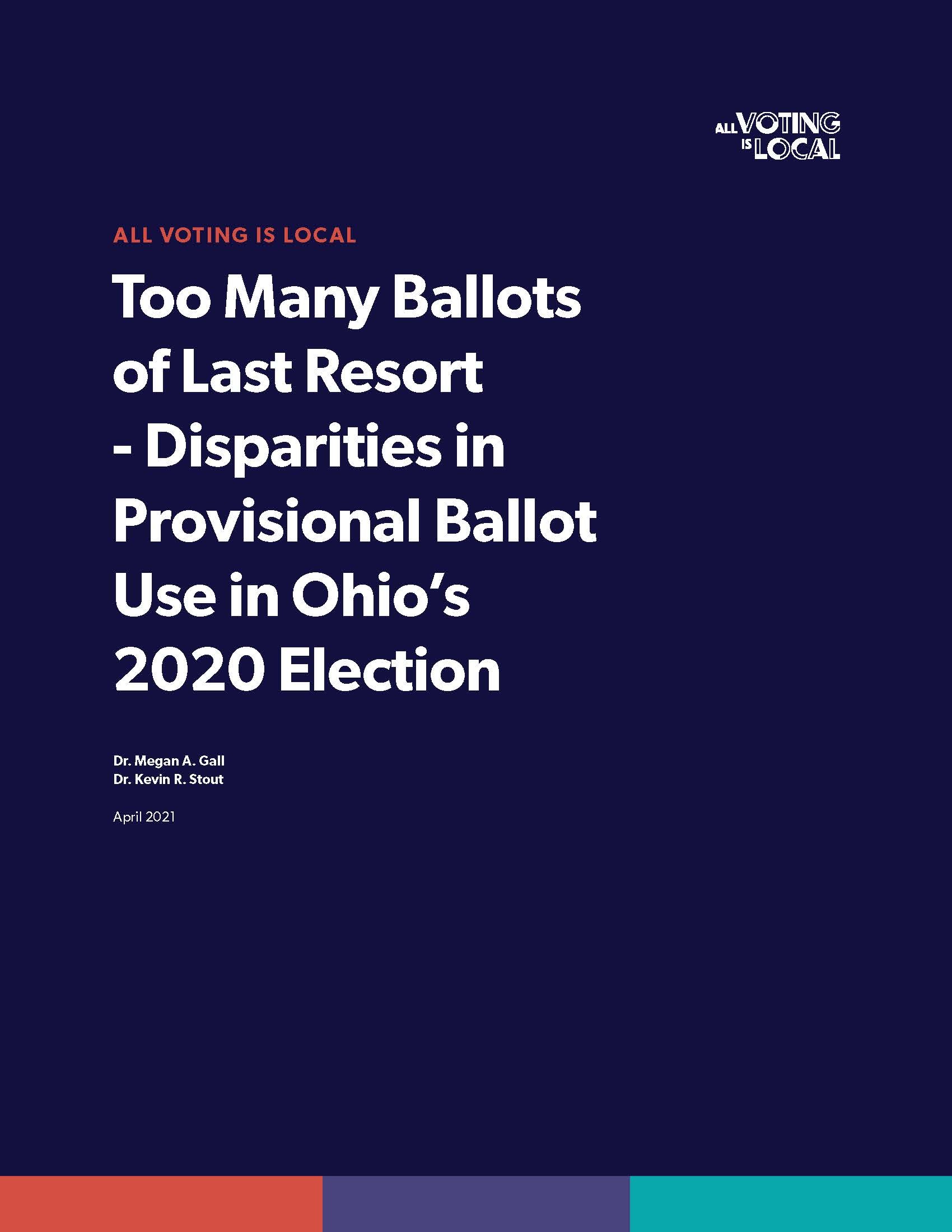Amid the COVID-19 pandemic, a record six million Ohioans voted in the 2020 general election. Of the 2.47 million voters who cast ballots on Election Day, 154,675 were asked to cast a provisional ballot, and of those, more than 24,000 were ultimately rejected.
This report examines these disparities and offers recommendations about how Ohio can adopt policies that increase the use of Vote-By-Mail (VBM) rates and decrease provisional ballot use so that all voters can make their voices heard.
Click here to read the report.
Recommendations:
- County and state officials must invest in expanding early voting opportunities including multiple absentee ballot return locations and multiple early vote locations in every county.
- County and state officials must create an infrastructure to support widespread vote by mail use across the state including automatic voter registration.
- Additional poll worker training on voting regulations, implicit bias, and anti-racism training.
- Ohio must begin to collect and publish reasons for provisional ballot use and make the data publicly available.
- More research is needed a) at the precinct level to understand dynamics within counties and cities and b) on the interactions between voters and poll workers that lead to disparate use of provisional ballots.
- Jurisdictions must invest in VBM infrastructure, widespread no-excuse absentee voting, and voter education. They must also create a robust ballot cure process that includes voter education and ballot alert systems that allow voters an opportunity to correct a faulty ballot.
